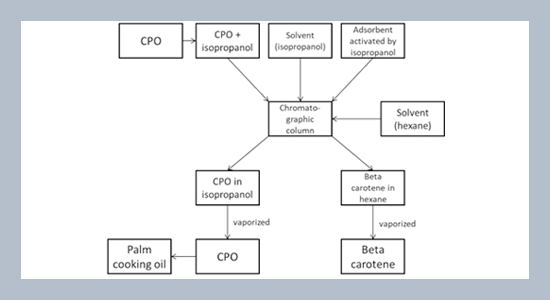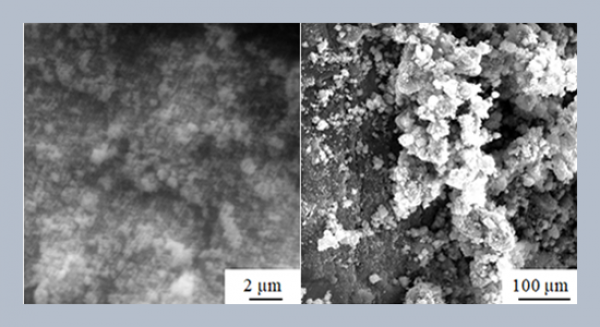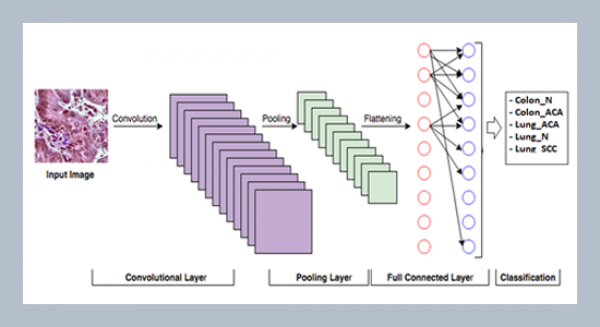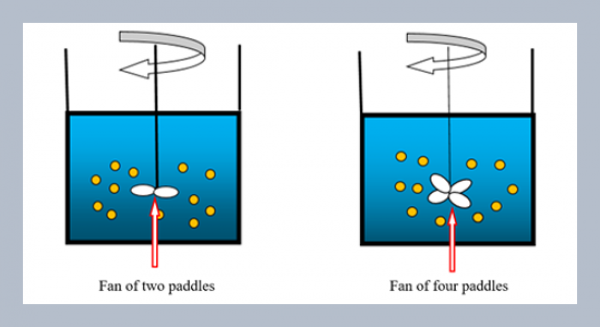REFERENCES
- Aboagye, E.A., Chea, J.D., Yenkie, K.M. 2021. Systems level roadmap for solvent recovery and reuse in industries. Iscience, 24, 103–114.
- Bangun, N., Sembiring, S.B., Putri, N.K., Karo, J.K. 2015. Performance of m-silicate and m-polystyrene sulfonate in extraction of carotenoids from crude palm oil. Procedia Chemistry, 16, 349–356.
- Beutner, S., Bloedorn, B., Frixel, S., Hernández Blanco, I., Hoffmann, T., Martin, H.D., Mayer, B., Noack, P., Ruck, C., Schmidt, M. 2001. Quantitative assessment of antioxidant properties of natural colorants and phytochemicals: Carotenoids, flavonoids, phenols and indigoids. The role of β‐carotene in antioxidant functions. Journal of the Science of Food and Agriculture, 81, 559–568.
- Blomhoff, R. 2001. Vitamin A and carotenoid toxicity. Food and Nutrition Bulletin, 22, 320–334.
- Bogacz-Radomska, L., Harasym, J. 2018. β-Carotene—properties and production methods. Food Quality and Safety, 2, 69–74.
- Britton, G., Liaaen-Jensen, S., Pfander, H. 2009. Carotenoids: Volume 5: Nutrition and health.
- Budiastutik, I., Nugraheni, S.A. 2018. Determinants of stunting in Indonesia: A review article. International Journal of Healtcare Research, 1, 43–49.
- Chichili, G.R., Nohr, D., Schäffer, M., von Lintig, J., Biesalski, H.K. 2005. β-Carotene conversion into vitamin A in human retinal pigment epithelial cells. Investigative Ophthalmology & Visual Science, 46, 3562–3569.
- Chongkhong, S., Tongurai, C., Chetpattananondh, P. 2009. Continuous esterification for biodiesel production from palm fatty acid distillate using economical process. Renewable Energy, 34, 1059–1063.
- CNBC-Indonesia. 2020. Indonesia has the opportunity to become the world's king of vitamin A and E producers (ri berpeluang jadi raja produsen vitamin A dan E dunia). CNBC Indonesia. Retrieved 2022-12-09 from www.cnbcindonesia.com/news/20201209180712-4-207954/ri-berpeluang-jadi-raja-produsen-vitamin-a-dan-e-dunia.
- Darnoko, D., Siahaan, D., Nuryanto, E., Elisabeth, J., Erningpraja, L., Tobing, P., Naibaho, P., Haryati, T. 2002. Palm oil processing technology and its derivative products (Teknologi pengolahan kelapa sawit dan produk turunannya). Pusat Penelitian Kelapa Sawit, Medan.[Indonesian].
- Das, A., Yoon, S.-H., Lee, S.-H., Kim, J.-Y., Oh, D.-K., Kim, S.-W. 2007. An update on microbial carotenoid production: Application of recent metabolic engineering tools. Applied Microbiology and Biotechnology, 77, 505–512.
- Davarnejad, R., Kassim, K., Zainal, A., Sata, S.A. 2008. Supercritical fluid extraction of β-carotene from crude palm oil using CO2. Journal of Food Engineering, 89, 472–478.
- de Souza Mesquita, L.M., Martins, M., Pisani, L.P., Ventura, S.P., de Rosso, V.V. 2021. Insights on the use of alternative solvents and technologies to recover bio‐based food pigments. Comprehensive Reviews in Food Science and Food Safety, 20, 787–818.
- Desmond, C., Casale, D. 2017. Catch-up growth in stunted children: Definitions and predictors. PloS One, 12, e0189135.
- Englmaierová, M., Skrivan, M., Bubancová, I. 2013. A comparison of lutein, spray-dried chlorella, and synthetic carotenoids effects on yolk colour, oxidative stability, and reproductive performance of laying hens. Czech Journal of Animal Science, 58, 412–419.
- Fallon, M.B., Boyer, J.L. 1990. Hepatic toxicity of vitamin A and synthetic retinoids. Journal of Gastroenterology and Hepatology, 5, 334–342.
- Fatimah, D., Chondro, F. 2020. Relationship between giving vitamin A capsules and caregiver knowledge with stunting in children aged 24–59 months (Hubungan pemberian kapsul vitamin A dan pengetahuan caregiver dengan stunting pada anak usia 24–59 bulan). Jurnal Biomedika dan Kesehatan, 3, 176–182.
- Global-Market-Insights. 2021. Beta carotene market size 2021–2027. Retrieved 2023-01-05 from www.gminsights. com/industry-analysis/beta-carotene-market.
- Globe-News-Wire. 2020. beta carotene market value to hit $640 million by 2026, Says Global Market Insights, Inc. Retrieved 2022-11-10 from https://www.globenewswire.com/en/news-release/2020/11/10/2123479/0/en/Beta-Carotene-Market-value-to-hit-640-Million-by-2026-Says-Global-Market-Insights-Inc.html.
- Gomes, G.V.D.L., Borrin, T.R., Cardoso, L.P., Souto, E., Pinho, S.C.D. 2013. Characterization and shelf life of β-carotene loaded solid lipid microparticles produced with stearic acid and sunflower oil. Brazilian Archives of Biology and Technology, 56, 663–671.
- Gul, K., Tak, A., Singh, A., Singh, P., Yousuf, B., Wani, A.A. 2015. Chemistry, encapsulation, and health benefits of β-carotene-A review. Cogent Food & Agriculture, 1, 1018696.
- Harahap, S., Nazar, A., Yunita, M., Pasaribu, R., Panjaitan, F., Yanuar, F., Misran, E. 2018. Isothermal approach to predict the removal efficiency of β-carotene adsorption from CPO using activated carbon produced from tea waste. IOP Conference Series: Materials Science and Engineering.
- Harvey, P.J., Ben-Amotz, A. 2020. Towards a sustainable Dunaliella salina microalgal biorefinery for 9-cis β-carotene production. Algal Research, 50, 102002.
- Hosseini, H., Jafari, S.M. 2020. Introducing nano/microencapsulated bioactive ingredients for extending the shelf-life of food products. Advances in Colloid and Interface Science, 282, 102210.
- Institute of Medicine, Panel on Micronutrients, Food and Nutrition Board, Subcommittee on Upper Reference Levels of Nutrients, Subcommittee of Interpretation and Use of Dietary Reference Intakes, Standing Committee on the Scientific Evaluation of Dietary Reference Intakes. 2002. Dietary reference intakes for vitamin A, vitamin K, arsenic, boron, chromium, copper, iodine, iron, manganese, molybdenum, nickel, silicon, vanadium, and zinc. Dietary Reference Intakes.
- Jeszka, W. 1997. Food colorants. Chemical and functional properties of food components. Technomic Publishing Company Lancaster., 293.
- Karo-Karo, J.A., Pardosi, H. 2017. Design and performance test of adsorption carotenoids separation equipment from palm oil (Rancang bangun dan uji kinerja peralatan pemisah karotenoida dari minyak sawit (CPO) hasil adsorpsi). Jurnal Teknik dan Teknologi, 12, 17–24.
- Kasmin, H., Lazim, A.M., Awang, R. 2016. Effect of heat treatments on the yield, quality and storage stability of oil extracted from palm fruits. Malaysian Journal of Analytical Sciences, 20, 1373–1381.
- Kläui, H., Bauernfeind, J. 1981. Carotenoids as food colors. Carotenoids as colorants and vitamin A precursors. Food Science and Technology.
- Market-Study-Report. 2019. Global Beta Carotene Market 2019 by Manufacturers, Regions, Type and Application, Forecast to 2024. Retrieved 2022-12-12 from https://www.marketstudyreport.com/reports/global-beta-carotene-market-2019-by-manufacturers-regions-type-and-application-forecast-to-2024?gclid=Cj0KCQiAsqOMBhDFARIsAFBTN3fwknJ6QiONXFDuehImeEJVfkGSy2nbYJjJOqjlZCoCp29PYiu_K7QaAh68EALw_wcB.
- Mathews-Roth, M.M. 1986. Beta-carotene therapy for erythropoietic protoporphyria and other photosensitivity diseases. Biochimie, 68, 875–884.
- Mezzomo, N., Ferreira, S.R. 2016. Carotenoids functionality, sources, and processing by supercritical technology: A review. Journal of Chemistry, 2016.
- Nagendran, B., Unnithan, U., Choo, Y., Sundram, K. 2000. Characteristics of red palm oil, a carotene-and vitamin E–rich refined oil for food uses. Food and Nutrition Bulletin, 21, 189–194.
- Noviendri, D., Hasrini, R.F., Octavianti, F. 2011. Carotenoids: Sources, medicinal properties and their application in food and nutraceutical industry. Journal of Medicinal Plants Research, 5, 7119–7131.
- Novoveská, L., Ross, M.E., Stanley, M.S., Pradelles, R., Wasiolek, V., Sassi, J.-F. 2019. Microalgal carotenoids: A review of production, current markets, regulations, and future direction. Marine Drugs, 17, 640.
- Olson, J.A. 1989. Provitamin A function of carotenoids: the conversion of β-carotene into vitamin A. The Journal of Nutrition, 119, 105–108.
- Priyadarshani, I., Rath, B. 2012. Commercial and industrial applications of micro algae–A review. Journal of Algal Biomass Utilization, 3, 89–100.
- Purnama, K.O., Setyaningsih, D., Hambali, E., Taniwiryono, D. 2020. Processing, characteristics, and potential application of red palm oil-A review. International Journal of Oil Palm, 3, 40–55.
- Razi, F., Azwar, A., Sofyana, S., Erfiza, N., Luxyana, M. 2022. Preparation and characterization of nanofiltration (NF) polyethersulfone and its preliminary studies on beta-carotene concentration from crude palm oil. IOP Conference Series: Earth and Environmental Science.
- Rice, A.L., Burns, J.B. 2010. Moving from efficacy to effectiveness: Red palm oil's role in preventing vitamin A deficiency. Journal of the American College of Nutrition, 29, 302S–313S.
- Rivani, M., Panjaitan, F., Hasibuan, H., Siahaan, D., Herawan, T. 2009. Optimasi penjumputan karotenoid dari metil ester sawit dengan proses solvolytic micellization. Jurnal Penelitian Kelapa Sawit, 17, 30–36.
- Rosa, P.T., Meireles, M.A.A. 2005. Rapid estimation of the manufacturing cost of extracts obtained by supercritical fluid extraction. Journal of Food Engineering, 67, 235–240.
- Southon, S., Faulks, R. 2003. Carotenoids in food: Bioavailability and functional benefits. In Phytochemical Functional Foods, 107–127.
- Stahl, W., Sies, H. 2012. β-Carotene and other carotenoids in protection from sunlight. The American Journal of Clinical Nutrition, 96, 1179S–1184S.
- Sundram, K., Sambanthamurthi, R., Tan, Y.-A. 2003. Palm fruit chemistry and nutrition. Asia Pacific Journal of Clinical Nutrition, 12.
- Surai, P., Speake, B., Sparks, N. 2001. Carotenoids in avian nutrition and embryonic development. 1. Absorption, availability and levels in plasma and egg yolk. The Journal of Poultry Science, 38, 1–27.
- Tan, K., Lee, K., Mohamed, A., Bhatia, S. 2009. Palm oil: Addressing issues and towards sustainable development. Renewable and Sustainable Energy Reviews, 13, 420–427.
- Van het Hof, K.H., West, C.E., Weststrate, J.A., Hautvast, J.G. 2000. Dietary factors that affect the bioavailability of carotenoids. The Journal of Nutrition, 130, 503–506.
- Wang, X.-D. 1994. Absorption and metabolism of beta-carotene. Journal of the American College of Nutrition, 13, 314–325.
- Wiyaratn, W., Watanapa, A. 2014. The study of extraction beta-carotene from crude palm oil for analysis economic. Advanced Materials Research.
- You, L., Baharin, B., Man, Y.C., Takagi, S. 2001. Effect of degumming process on chromatographic separation of carotenes from crude and degummed palm oil. Journal of Food Lipids, 8, 27–35.
- Zhang, R., Chen, G., Yang, B., Wu, Y., Du, M., Kan, J. 2021. Insights into the stability of carotenoids and capsaicinoids in water-based or oil-based chili systems at different processing treatments. Food Chemistry, 342, 128308.















